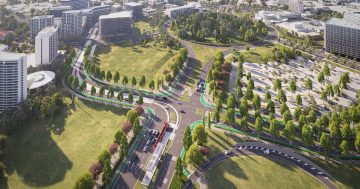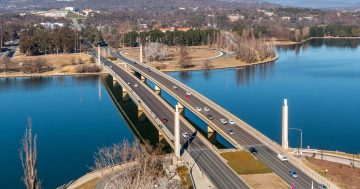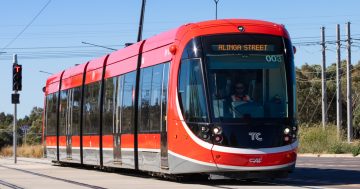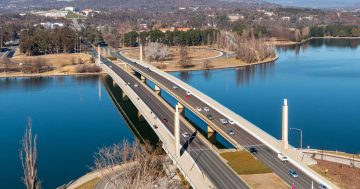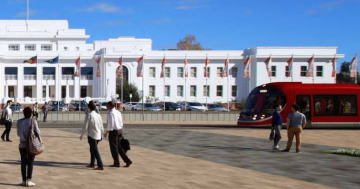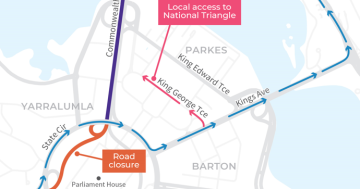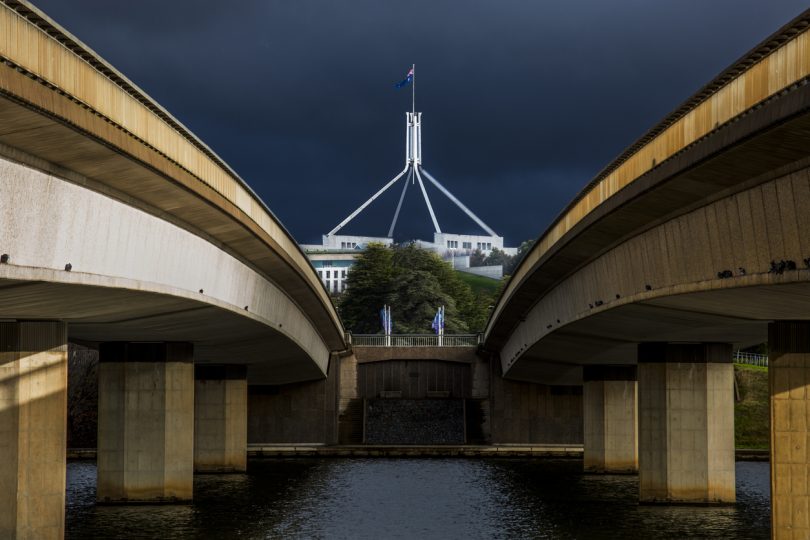
The heritage-listed Commonwealth Avenue Bridge. The ACT Government wants to build a third bridge for light rail between the spans.
The National Capital Authority has thrown the ACT Government another light rail curve ball by announcing that it is looking at a replacement option for the nearly 60-year old Commonwealth Avenue Bridge across Lake Burley Griffin.
Transport Minister Meegan Fitzharris said the news had come as a surprise to the Government, which is focused on building a third bridge for light rail Stage 2 to Woden between the existing spans.
The NCA says it wants to know whether it would be more cost effective to replace the bridge with a new structure catering for all uses including light rail rather than spend $70-100 million upgrading the current crossing.
NCA Chief Executive Sally Barnes told ABC radio that the bridge was due for major work to strengthen it, broaden it and address safety issues from pedestrian and cycle use, and the Federal Government had provided funding to assess the work required.
“We thought we would not be doing our jobs if we didn’t explore as an option what would be the costs and benefits and the issues that we have to keep in mind if instead of having a third bridge we looked at whether there was a better way to do a single bridge,” she told ABC radio.
Ms Fitzharris said it was important for the NCA to do due diligence but the idea of a replacement bridge raised a number of issues for the Government including the function of the road and public transport network and the heritage aspects.
“What we need is proper due diligence but we also need some certainty and we’ll continue to work with the NCA on getting certainty around the number of processes to do with construction of light rail to Woden,” she said.
Ms Fitzharris said the Government would press ahead with its Stage 2 environmental approvals referral and its business case based on a third bridge carrying light rail across the lake.
She said the community would want to see a pretty good case for the well-loved bridge’s replacement.
The notion of a replacement bridge could also mean an even lengthier delay to light rail in the south after the setback caused by the re-election of the Morrison Government.
Heritage was also uppermost in Ms Barnes’s mind, telling the ABC that “those bridges are magnificent, they encapsulate modern mid-century architecture so you wouldn’t want to play around with them unless there was a very good reason”.
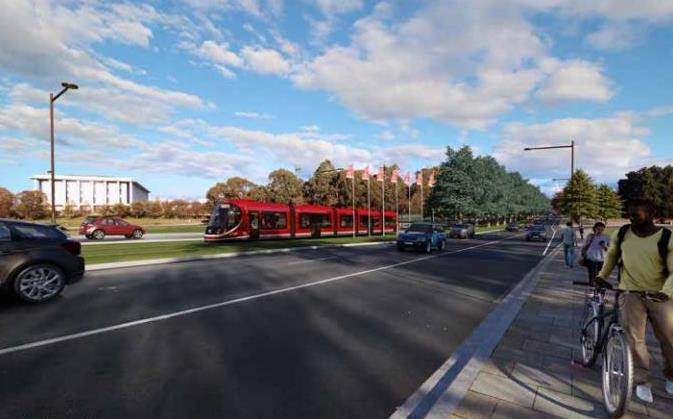
A Government illustration of a light rail vehicle approaching Commonwealth Avenue Bridge.
She said light rail in the south was a very different proposition to the north.
“When you come across the lake it’s a very different context. Northbourne Avenue is important but when you come across the lake into the Parliamentary Zone it’s very different, [you cross] into a world of history making and heritage, an area that is so steeped in the story of Australia that we have to take extra care,” she said.
But Ms Barnes said the NCA did not want to be asked in the future why it had not considered the option of replacing the bridge.
Ms Fitzharris said she would continue to work with the NCA and take their lead on the bridge.
Earlier, a Government spokesperson had said that as the NCA had received funding to assess works required to the existing bridges, and as light rail to Woden would need to cross the lake, it made sense to work collaboratively to ensure the best outcome for all parties was achieved.
An NCA spokesperson said the NCA and the ACT Government had agreed to hold workshops with engineers, designers, architects and heritage experts to consider all options at this early stage of the planning process.
“If the initial investigations with the ACT Government determined that a new bridge could be a practical and viable option, the NCA would undertake significant community consultation,” the spokesperson said.
Inner South Canberra Community Council chair Marea Fatseas welcomed the NCA’s move, saying it made a lot of sense to take a look at the long-term needs of the bridge for all its purposes.
She said it was a more holistic way of looking at it than talking about building something between the existing bridges for light rail.
“It’s better to do the planning well than to rush something through that might have a bad outcome,” she said.
The council believed that Stage 1 should be evaluated so the lessons of that project could be applied in Stage 2, there should be a cost-benefit analysis, and an integrated land use and transport plan done in advance.
This was the reverse of the process for Stage 1, which she said went about it the wrong way round.
Ms Fatseas said Stage 1 was pretty straightforward compared with the south where there were multiple heritage and engineering challenges, including the lake crossing, Parliament House and stops along Adelaide Avenue.
The NCA will report on its findings by August.













